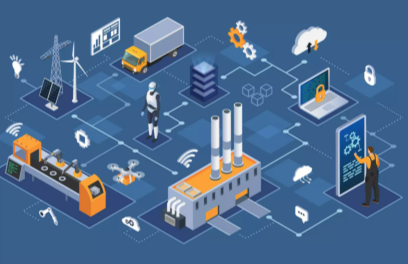Edge computing represents a significant shift in data processing by decentralizing operations and moving them closer to data sources. This paradigm reduces latency and enhances efficiency, which is crucial for real-time applications. The implications of edge computing extend across various industries, promising improvements in user experience and operational capabilities. As organizations increasingly adopt this technology, understanding its benefits and potential applications becomes essential for those looking to stay ahead in a rapidly evolving digital landscape.
Understanding Edge Computing
Although many are familiar with cloud computing, understanding edge computing requires a shift in perspective regarding data processing and resource allocation.
Edge computing decentralizes data processing by bringing computation and storage closer to the data source, often at the network’s edge. This shift enables faster response times and reduces latency, critical for applications demanding real-time analysis.
The edge infrastructure supports various devices and sensors, processing data locally rather than relying solely on distant cloud servers. This localized approach not only enhances performance but also alleviates bandwidth concerns, allowing for more efficient use of resources.
Read more: The Environmental Impact of Technology: Pros and Cons
Key Benefits of Edge Computing
As organizations increasingly adopt edge computing, they unlock a range of key benefits that enhance operational efficiency and responsiveness.
One significant advantage is cost savings, as processing data closer to the source reduces bandwidth costs and minimizes reliance on centralized cloud services. This decentralization allows organizations to allocate resources more effectively, ultimately leading to reduced operational expenses.
Additionally, edge computing bolsters data privacy by keeping sensitive information local, thereby limiting exposure to potential breaches during transmission. By processing data on-site, organizations can implement tailored security measures that meet specific regulatory requirements.
Real-World Applications of Edge Computing
Edge computing is being integrated into various industries, showcasing its versatility and transformative potential.
In smart cities, edge computing facilitates real-time data processing from sensors, enhancing traffic management, waste management, and public safety. By analyzing data locally, these cities can respond to incidents swiftly, optimizing resources and improving the quality of life for residents.
In the realm of industrial automation, edge computing enables manufacturers to monitor machinery and production lines in real time, reducing downtime and increasing operational efficiency. By processing data at the source, companies can make informed decisions rapidly, fostering innovation and competitiveness.
These applications illustrate how edge computing not only enhances efficiency but also supports the development of resilient, responsive environments in both urban and industrial settings.
The Future of Edge Computing
The advancements in edge computing signal a promising future characterized by increased integration across various sectors.
Future trends suggest a significant shift towards decentralized data processing, enhancing real-time analytics and responsiveness.
As technological advancements continue to evolve, industries such as healthcare, manufacturing, and smart cities will increasingly rely on edge solutions to optimize operations and improve user experiences.
The rise of 5G networks will further accelerate this transformation, enabling faster data transfer and facilitating more sophisticated edge applications.
Moreover, the growing emphasis on data privacy and security will propel the adoption of edge computing, allowing organizations to process sensitive information locally.
This evolution holds the potential to redefine connectivity, empower users, and promote innovation across diverse fields.
Conclusion
In a world increasingly reliant on instantaneous data processing, edge computing emerges as a transformative force, juxtaposing the traditional centralized cloud model with its decentralized counterpart. While cloud computing offers vast storage and processing power, it often succumbs to latency and bandwidth challenges. Conversely, edge computing empowers real-time decision-making at the data source, enhancing efficiency and privacy. As industries evolve, this technology will not only shape operational landscapes but also redefine user experiences, underscoring its critical relevance in the digital age.



